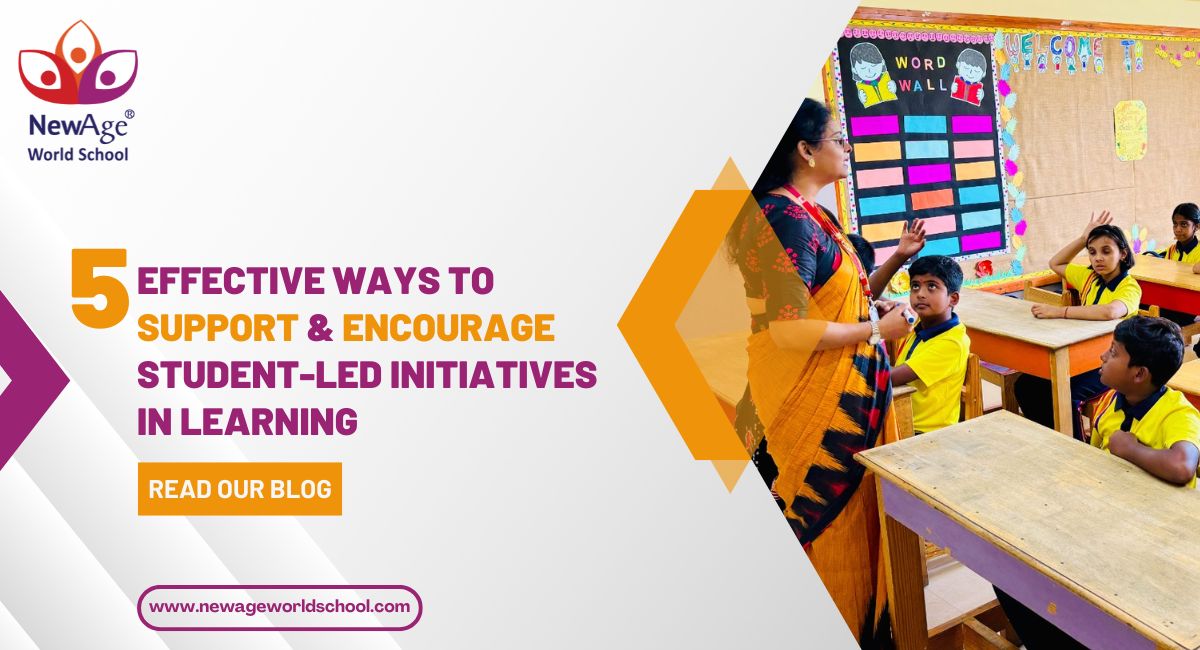

When we say a person has learned something, it means that the individual can perform the task independently. Learning happens daily in everyone’s life, and experience often takes the lead role in teaching. When learning is experienced through activities, especially in a fun and engaging environment with peers, it leaves a lasting impression on both the mind and heart. Such experiences foster engagement, creativity, and critical thinking in young minds.
Harvard professor, Howard Gardner developed the Theory of Multiple Intelligences, which emphasizes that not all learners learn in the same way. Gardner's theory identifies eight different types of intelligence, which include:

Every classroom is a heterogeneous group of students. Identifying the different intelligence and catering to them is the responsibility of the educator or facilitator. Here are five strategies to support and encourage student-led initiatives in learning:
Hands-on activities are crucial for effective learning as they provide students with opportunities to directly engage with concepts and materials. This approach ensures:
Engagement and motivation
Enhanced understanding and retention of concepts
Development of critical thinking to solve real-life challenges
Collaboration and social skill-building
Students with kinesthetic, interpersonal, logical-mathematical, and naturalistic intelligence particularly benefit from these activities.
Integrating ICT into the learning process enhances educational experiences and prepares students for a digital world. The main advantages of ICT in education include:
Personalized learning that allows students to work at their own pace
Engaging learning environments
Development of digital literacy
Support for diverse learning needs, catering to both visual and auditory learners
Students with visual and musical intelligence thrive with these types of activities.
Effective drilling reinforces understanding and improves student performance. The key benefits include:
Reinforcement of knowledge
Development of proficiency
Increased confidence
Encouragement of automaticity
Students with intrapersonal and linguistic intelligence benefit from drilling activities.
Storytelling is a powerful tool used for centuries to convey knowledge, values, and cultural heritage. Its benefits in education include:
Engaging students emotionally
Eliminating boredom
Enhancing comprehension and retention
Promoting critical thinking
Fostering creativity and imagination
Students with intrapersonal, interpersonal, musical, and linguistic intelligence benefit from storytelling activities.
Graphic organizers visually represent information, helping students organize and understand concepts more clearly. By breaking down complex information into manageable parts and visually representing relationships between ideas, graphic organizers:
Support critical thinking and analysis
Cater to diverse learning styles
Improve organization and planning
Encourage regular review and reflection
Students with visual and linguistic intelligence benefit greatly from graphic organizers.
In summary, all these strategies help foster a dynamic learning environment for young, curious minds. Hands-on activities promote engagement, while ICT integration is key for modern learning. Drilling helps solidify knowledge, and storytelling enhances creativity and engagement. Finally, graphic organizers support critical thinking and deepen understanding, equipping students with essential skills for academic success.
Leave a Reply
Your email address will not be published. Required fields are marked *
Comments
No comments available